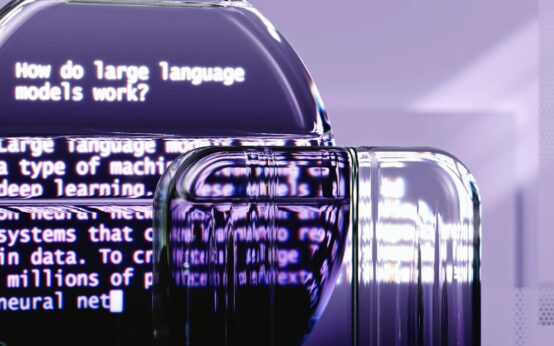What is Edge Computing and Why Does It Matter?
Let’s talk about something that’s quietly revolutionizing how we interact with technology: edge computing. Remember those frustrating moments waiting for a website to load or a video to buffer? Edge computing aims to make those a distant memory. In simple terms, it’s about bringing data processing closer to where it’s needed – the “edge” of the network – rather than relying on distant cloud servers. This shift has massive implications for everything from self-driving cars to smart factories.
Understanding the Basics of Edge Computing
Imagine you’re playing an online game. Every action you take – every click, every move – generates data that needs to be processed. Traditionally, that data would travel all the way to a central server, get processed, and then the response would travel back to you. This round trip introduces latency, that annoying delay that can ruin your gaming experience. Edge computing changes the game by processing that data much closer to you, perhaps at a local server or even on your device itself. This minimizes latency and allows for near real-time interactions.

Edge Computing vs. Cloud Computing: A Symbiotic Relationship
It’s important to understand that edge computing isn’t about replacing cloud computing. Think of them as complementary technologies. The cloud remains essential for storing massive datasets and performing complex computations. Edge computing, on the other hand, handles the time-sensitive tasks, filtering and pre-processing data before sending it to the cloud. This reduces the strain on network bandwidth and allows for faster, more efficient data processing overall. It’s like having a smart assistant that handles the small stuff so the main office can focus on the big picture.
The Real-World Impact of Edge Computing
The applications of edge computing are vast and growing rapidly. Take the Internet of Things (IoT), for example. Smart devices, from connected refrigerators to industrial sensors, generate massive amounts of data. Processing this data at the edge enables real-time monitoring, predictive maintenance, and improved efficiency. I remember visiting a smart factory where edge computing was used to analyze data from sensors on the assembly line, predicting potential equipment failures before they happened. It was incredible to see how this technology was transforming the manufacturing process.

Why Edge Computing Matters: Key Advantages
The benefits of adopting edge computing are significant. Reduced latency, improved bandwidth efficiency, and enhanced security are just the tip of the iceberg. By processing sensitive data locally, organizations can minimize the risk of data breaches and comply with data privacy regulations more effectively. This is particularly important in industries like healthcare, where data security is paramount.
The Future of Edge Computing
As 5G networks become more widespread, edge computing will become even more powerful and ubiquitous. The combination of high-speed connectivity and decentralized data processing will unlock new possibilities for innovation across a wide range of industries, from autonomous vehicles to personalized medicine. We’re only just beginning to scratch the surface of what edge computing can do. It’s an exciting time to be involved in this transformative technology.
Edge computing is more than just a technological advancement; it’s a paradigm shift in how we think about data processing and its impact on our lives.

FAQ: Your Edge Computing Questions Answered
What is the main difference between edge computing and cloud computing?
Edge computing processes data closer to the source, while cloud computing relies on centralized data centers. They work together to optimize data processing.
What are some examples of edge computing in action?
Self-driving cars, smart factories, and remote monitoring systems are all examples of edge computing applications.
Why is edge computing important for the future?
Edge computing enables faster data processing, improved security, and new possibilities for innovation in various industries.
Is edge computing secure?
Edge computing can enhance security by processing sensitive data locally and minimizing the risk of data breaches.



 Software is Eating the World: A Deep Dive Analysis
Software is Eating the World: A Deep Dive Analysis  How Tech is Revolutionizing Disaster Response
How Tech is Revolutionizing Disaster Response  Geo-engineering Guide: Can We Really Hack the Planet?
Geo-engineering Guide: Can We Really Hack the Planet?  AI and the Future of Search Engines: What’s Next?
AI and the Future of Search Engines: What’s Next?  How Technology is Changing Sports: A New Era
How Technology is Changing Sports: A New Era  The Tech Behind High-Frequency Trading Explained (2024)
The Tech Behind High-Frequency Trading Explained (2024)  A Guide to NFT Generative Art Platforms (2024)
A Guide to NFT Generative Art Platforms (2024)  Crypto’s Carbon Footprint: The Real, Nuanced Story
Crypto’s Carbon Footprint: The Real, Nuanced Story  Join a Web3 Community: The Ultimate Networking Guide
Join a Web3 Community: The Ultimate Networking Guide  What Are AMMs? Automated Market Makers Explained Simply
What Are AMMs? Automated Market Makers Explained Simply  NFT Legal Questions Answered: A Simple Guide
NFT Legal Questions Answered: A Simple Guide  Build a Balanced Cryptocurrency Portfolio: A 2024 Guide
Build a Balanced Cryptocurrency Portfolio: A 2024 Guide